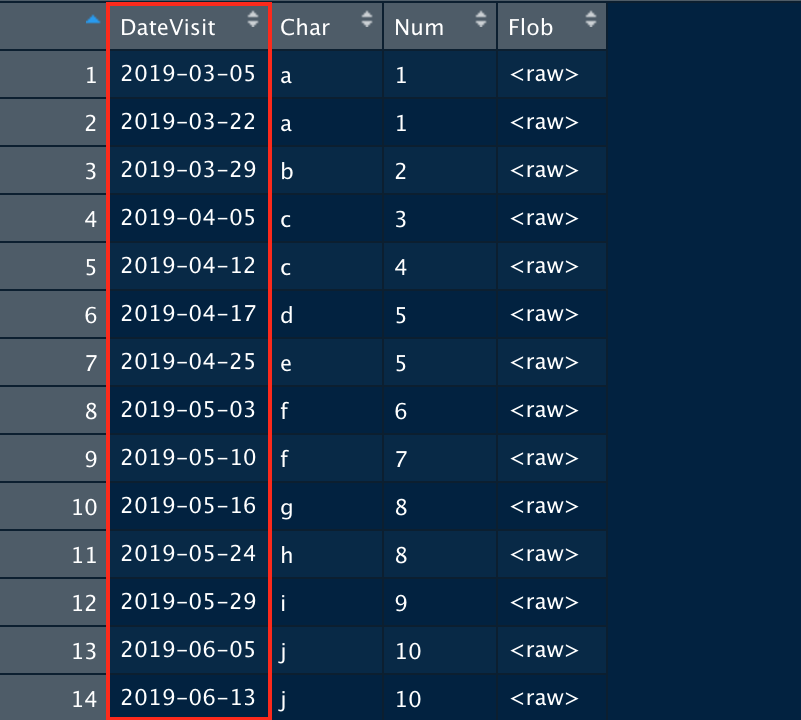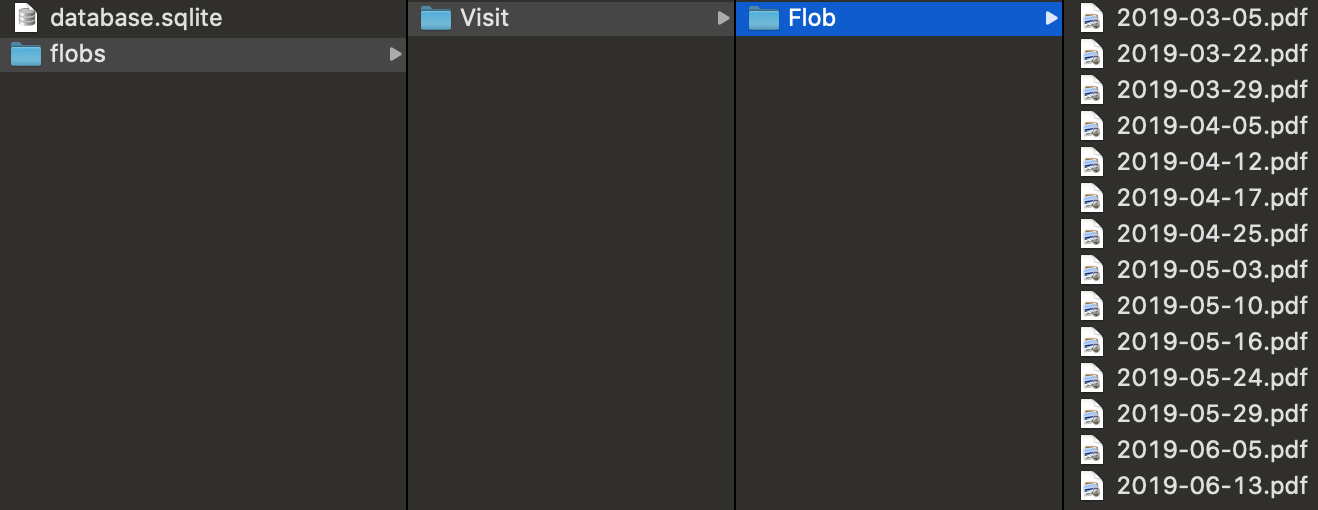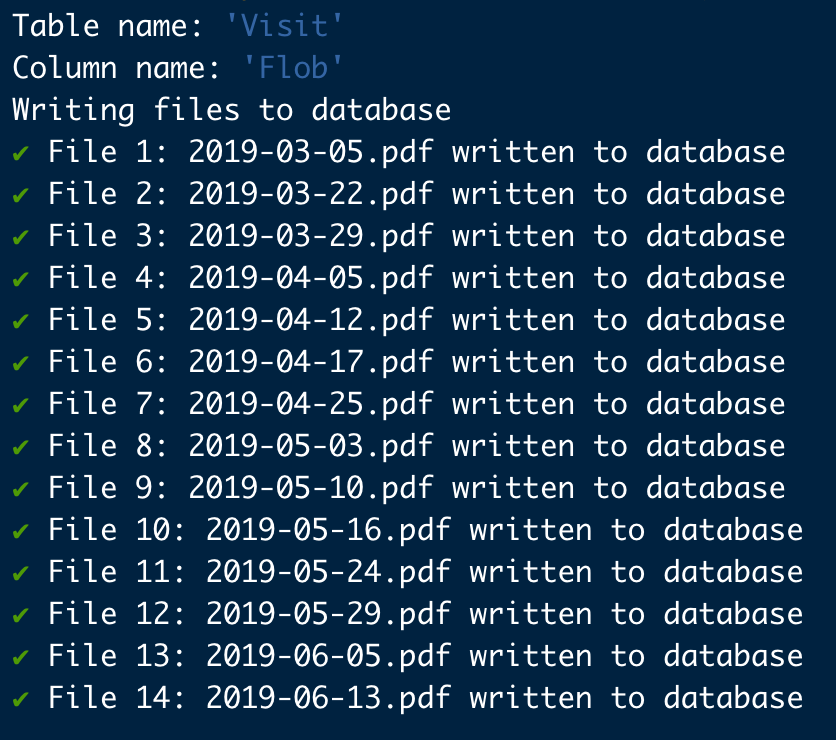Batch exporting and importing flobs for an sqlite database
After creating a new version of a database, it can be time consuming to re-populate flobs individually using the slobr app. dbflobr provides functionality to carry out this task automatically with minimal user input, and provides useful console output to summarize the results. Lets assume you have a database containing one or more tables with Blob columns.
Saving flobs from a database
Create a connection to your database and run the function
dbflobr::save_all_flobs() providing the database connection
and the file path you have chosen for storing the flobs. dbflobr will
automatically use the table’s primary key as the file name for each
saved flob. In this example, ‘DateVisit’ is the unique primary key

Flobs are stored in sub-directories named after the tables and columns they originated from. This preserves all of the information necessary to repopulate a new version of the database into the correct locations.

Importing flobs back into a database
After a new version of the database has been created, run the
function dbflobr::import_all_flobs(), providing the
connection to the new database and the file path to the directory in
which all of your flobs are stored. dbflobr will repopulate the database
using the file and directory names to import each flob to the correct
cell.

Working with individual tables and columns
If you only want to export and import flobs from particular tables or
columns you can use dbflobr::save_flobs() and
dbflobr::import_flobs() respectively, providing the
additional arguments ‘table_name’ and ‘column_name’ as needed.
